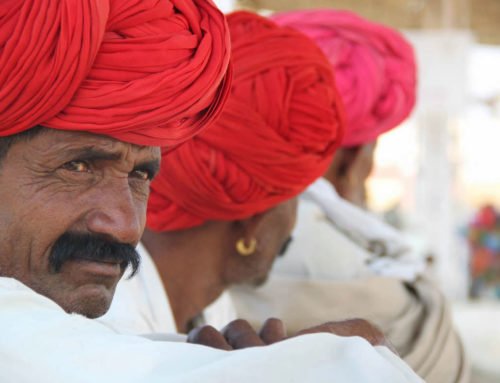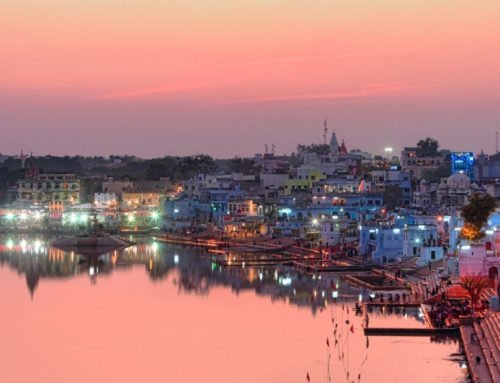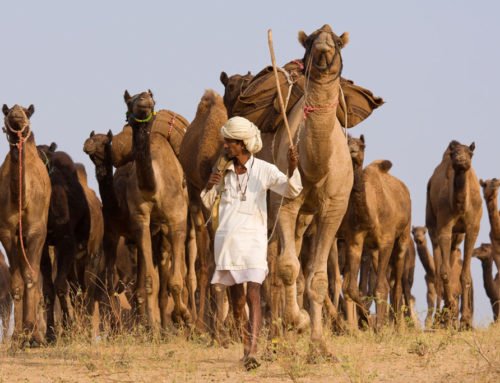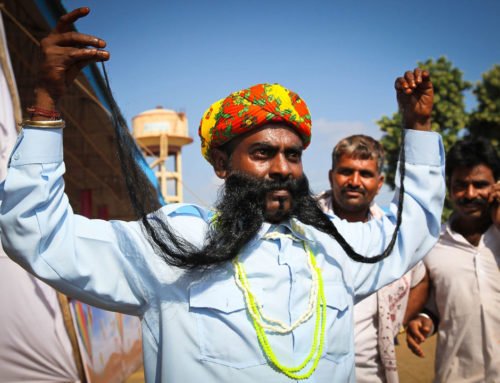Overview
- Features: An annual week-long camel and livestock fair culminating in the religious festival of Kartik Purnima (Full Moon)
- Opening Times: All day
- Best Time to Visit: 2014 – October 30-November 6; 2015 – November 18-25; 2016 – dates to be announced
- Duration: 7 days
- Travelled By: Foot
- Cost: Free
- Address: Pushkar Maidan, Pushkar, Rajasthan, India
- Type: Event
Author Reviews[display_rating_item_results rating_form_id=”2″ rating_entry_ids=”1″ show_category_filter=”false” show_options=”true” result_type=”star_rating” preserve_max_rating=”true” show_title=”false” show_count=”false” ]
Total Rating: [display_rating_result rating_form_id=”2″ show_count=”false” show_rich_snippets=true] [accordions load=”1″] [accordion title=”User Reviews” last] [display_rating_item_results rating_form_id=”5″ show_options=”true” result_type=”star_rating” preserve_max_rating=”true” show_title=”false” show_count=”true” show_rich_snippets=true] [/accordion] [accordion title=”Add Review”][display_rating_form show_email_input=”true” show_comment_textarea=”true” show_name_input=”true” rating_form_id=”5″] [/accordion] [/accordions]
Summary
The Pushkar Fair is a the largest and most colouful livestock fair in India. People come from far and wide to trade camels and other livestock or to perform religious rituals for the festival of Kartik Purnima (Full Moon). For a week, camel-cart races, parades and other cultural events are organised which are full of fun and gaiety. As a tourist, the Fair is the perfect time to see Pushkar at its best.
Pushkar Fair: An Overview
The Pushkar Fair is an annual week-long camel and livestock fair held in Pushkar, Rajasthan. It culminates with religious rituals for Kartik Purnima, a Hindu festival marking the full moon.
A bustling fair full of life and zest, it is one of the largest cattle fairs in India held every year in Pushkar on Kartik Purnima (Full Moon, October – November). The seven-day affair is considered to be the most colourful animal fair in the world.
We arrived a few days before the start of the Pushkar Fair to watch the trading of camels and horses. We stayed for two days and returned later when the Pushkar Fair was in full swing to watch the competitions and enjoy the atmosphere at the Fair.
[singlepic id=2609 w=720, h=560, float=center]
The huge Mela is Pushkar’s biggest draw. Over 200,000 visitors and pilgrims and hordes of cattle and camels with their semi-nomadic tribal drivers, crowd into town. Hundreds of horses, camels, cows and bulls are brought here by farmers, breeders and camel traders to be sold.
The cattle trading itself actually takes place during the week before the fair; some travellers have reported arriving during the fair and there being no animals left! However this was not the case when we were there. While there were lots of camels and livestock in the fair grounds before the start of the Pushkar Fair, when we returned after the Fair had begun, there were still several camels, horses and oxen around.
Read about our experience with the camels at the Pushkar Fair.
[singlepic id=2610 w=720, h=560, float=center]
As much as the Pushkar Fair is about the camels, it is about the horses as well. A big part of the Fair involves buying and selling of horses, horse competitions and plenty of horse parades as a result. I really enjoyed watching the horses in action, both at the competition and during parades.
In order to get a good glimpse of the horses in action, it is best to visit Pushkar before the start of the Pushkar Fair. Horses are on display in the fair grounds either running around at full pace or displaying acrobatic tricks at the command of their trainers.
Read about our experience with the horses at the Pushkar Fair.
[singlepic id=2611 w=720, h=560, float=center]
The Pushkar Fair commences with an opening ceremony – first the raising of the Indian flag followed by a parade down the main road in Pushkar. As part of the parade, women dressed in beautiful Rajasthani costumes perform dances and Indian theatre groups march down the street. Flowers are thrown by the crowd as Hindu holy men march in the parade and men dress up as Hindu gods and are showered with blessings and flower petals.
One of the most popular events of the opening ceremony is the dance by groups of school girls. Dressed in colourful Rajasthani outfits, they perform choreographed dance sequences in the maidan in front of large crowds of people.
[singlepic id=2612 w=720, h=560, float=center]
The Pushkar Fair draws people from far and wide to attend the largest fair in the region. Whether they are there for trading camel and livestock, or to perform religious rituals and prayers at the temples, each of them add a different dimension to the Pushkar Fair making it so much more colourful.
People come to the Fair to buy and sell various items for traders and tourists alike. Sales in leather whips, shoes, embroidered animal covers soar while women bargain over clay pots, bangles, necklaces and printed cloth. Vendors selling food and drinks abound.
Read about the different kinds of people at the Pushkar Fair.
[singlepic id=2601 w=720, h=560, float=center]
The main maidan or stadium is located north of the main market street in Pushkar. It is hard to miss as you enter into Pushkar town. This is the place where all the action takes place – from horse displays and negotiations to all the main races and competitions. It is a huge, dusty fair ground so take care if you suffer from asthma. Make sure to look left and right when crossing the maidan as horses gallop around at full speed and on many occasions I nearly got knocked over by a camel or horse on the gallop.
[singlepic id=2613 w=720, h=560, float=center]
Events begin four to five days before the full moon in November. Camel-cart races, parades and other cultural events are organised, which are full of fun and gaiety. In the Ladhu Umt race teams of up to ten men cling to animals, and one another, in a hilarious and often chaotic spectacle. The Tug-of-War between Rajasthanis and foreigners is usually won by the local favourites. There are also sideshows with jugglers, acrobats, magicians and folk dancers.
Read about our experience of the various races and competitions at the Pushkar Fair.
[singlepic id=2605 w=720, h=560, float=center]
The Pushkar Fair won’t be a fair without stalls selling toys, vendors selling food and rides for kids. Even though there are several rides in the Fair, the ferris wheel is the most popular ride in town. It is the main attraction which can be seen from any vantage point in Pushkar and appears in several photos of the Pushkar Fair.
[singlepic id=2614 w=720, h=560, float=center]
As the Fair has a religious significance too, pilgrims and Hindu priests come in thousands from far and near. After an eventful day, as the sun sets, the entire atmosphere reverberates with the ringing of bells and prayers in the temples. At night, hundreds of small oil lamps are lit and placed on green leaves and floated in Pushkar Lake after the Arti Puja (prayers), illuminating the entire lake.
[singlepic id=2606 w=720, h=560, float=center]
Evenings at the Pushkar Fair were allocated to Rajasthani cultural shows. Two shows we really enjoyed were a puppet show, and a show of Rajasthani folk songs performed by well known artists.
The shows would start early in the evenings once all races and competitions were over for the day. The maidan would be transformed from a race and show ground into a lit up arena for stage performances.
[singlepic id=2603 w=720, h=560, float=center]
A highlight of the Pushkar Fair after sunset was the temple dances. For five evenings, from 6:30 to 8:00 pm, a traditional Indian dance was performed in the Old Rangji temple by a renowned Indian dancer.
We attended the Kathak temple dance one evening at the Old Rangji temple. The old temple is not to be confused with the new Rangji temple which is more well known in town. The dance was performed by renowned Kathak dancer, Smt Malti Shyam, who is a professional dancer, teacher and choreographer. She has performed internationally all over the world.
The program consisted of three dance pieces with the movements characteristic of Kathak style. The dance began with a slow piece invoking the God Krishna, followed by a more complicated rhythmic dance pattern and finally a dance depicting a bhajan, a Hindu devotional song to Lord Krishna.
There were several seats as well as mattresses laid out on the floor in front of the stage. Although we had front row seats, those sitting on the mattress in front of us kept getting up to take photos which was annoying. Choose your seat carefully so you get a good view.
The venue provided a perfect backdrop to the dance. The combination of the old temple in the background with a traditional Indian dance being performed by a well-known artist provided a perfect event to end a wonderful day at the Pushkar Fair.
Following the temple dance, we had to leave as we were headed to Ajmer to catch a late night train.
Even though we stayed for a few days in Pushkar, we felt like it wasn’t enough time. While we would have loved to have stayed for an entire week, it was still a wonderful experience to have witnessed the fun activities, colourful people and lively atmosphere at the Pushkar Fair. This was one of the highlights of our ten-week trip around India.








Do you have to book tickets to the fair in advance? How much does it cost to get in?
Hi Jayden, there are no tickets required for this event. Just go along and enjoy!